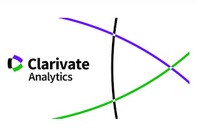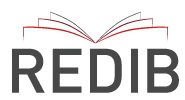Actitudes, percpeciones y uso de internet y las redes sociales entre los adolescentes de la comunidad gallega
Agencias de apoyo
- Valedor do Pobo de Galicia
Resumen
Investigadores e instituciones han venido mostrando en los últimos años una creciente preocupación por el uso de Internet entre los adolescentes. Su impacto a nivel psicológico y conductual se traduce a menudo en la aparición de conductas adictivas y de riesgo, fracaso escolar y problemas familiares. Habida cuenta del interés que el tema despierta a diferentes niveles, este trabajo se plantea con una doble intención: (1) disponer de datos que permitan conocer desde un punto de vista descriptivo cuáles son las actitudes, percepciones y hábitos de uso de Internet y las redes sociales entre los adolescentes y, (2) profundizar en su comprensión, contribuyendo así al diseño de estrategias que favorezcan un uso más racional y saludable de la Red. Sobre una encuesta a la población de escolares de Enseñanza Secundaria Obligatoria de la comunidad gallega, en la que participaron un total de 2339 individuos, los resultados obtenidos permiten constatar el alto grado de implantación de Internet en la población objeto de estudio y calibrar con datos empíricos la magnitud del problema. A pesar de que las cifras obtenidas no justifican una actitud alarmista, sí advierten de la necesidad de poner en marcha planes de acción concretos de manera inmediata.
Descargas
Citas
Armstrong, L., Phillips, J., y Saling, L. (2000). Potential determinants of heavier Internet usage. International Journal of Human-Computer Studies, 53, 537–550.
Aslanidou, S. y Menexes, G. (2008). Youth and the Internet: Uses and practices in the home. Computers & Education, 51, 1375-1391. doi:10.1016/j.compedu.2007.12.003
Asociación para la Investigación de Medios de Comunicación. (2012). Navegantes en la red. 14ª encuesta AIMC a usuarios de Internet. Madrid: Autor. Recuperado de http://download.aimc.es/aimc/f5g9/macro2011.pdf
Beranuy, M., Chamarro, A., Graner, C., y Carbonell, X. (2009). Validación de dos escalas breves para evaluar la adicción a Internet y el abuso de móvil. Psicothema, 21, 480-485.
Brenner, V. (1997). Psychology of computer use: Parameters of Internet use, abuse and addiction: the first 90 days of the internet usage survey. Psychological Reports, 80, 879-882.
Bringué, X. y Sádaba, C. (2009). La generación interactiva en España: Niños y adolescentes ante las pantallas (1a. ed.). Barcelona y Madrid: Ariel y Fundación Telefónica.
Brown, T. A. (2006). Confirmatory factor analysis for applied research. New York: Guilford Press.
Byrne, B. M. (2009). Structural equation modeling with AMOS: Basic concepts, applications, and programming (2nd ed.). London: Psychology Press.
Caplan, S. E. (2002). Problematic Internet use and psychosocial well-being: Development of a theory-based cognitive-behavioral measurement instrument. Computers in Human Behavior, 18, 553–575.
Carbonell, X., Chamarro, A., Griffiths, M., Oberst, U., Cladellas, R. y Talarn, A. (2012). Problematic Internet and cell phone use in Spanish teenagers and young students. Anales de Psicología, 28, 789-796.
Carbonell, X., Fúster, H., Chamarro, A. y Oberst, U. (2012). Adicción a Internet y móvil: Una revisión de estudios empíricos españoles. Papeles del Psicólogo, 33, 82-89.
Castellana, M., Sánchez-Carbonell, X., Graner, C. y Beranuy, M. (2007). El adolescente ante las tecnologías de la información y la comunicación: Internet, móvil y videojuegos. Papeles del Psicólogo, 28, 196-204.
Chen, K., Tarn, J.M. y Han, B.T. (2004). Internet dependency: Its impact on online behavioral patterns in E-commerce. Journal Human Systems Management, 23, 49-58.
Chou, C., y Hsiao, M. C. (2000). Internet addiction, usage, gratification, and pleasure experience: The Taiwan college student's case. Computers & Education, 35, 65–80.
Chow, S.L., Leung, G.M., Ng, C. y Yu, E. (2009). A Screen for Identifying Maladaptive Internet Use. International Journal of Mental Health & Addiction, 7, 324–332. doi:10.1007/s11469-008-9170-4
Curran, P. J., West, S. G., y Finch, J. F. (1996). The robustness of test statistics to nonnormality and specification error in confirmatory factor analysis. Psychological Methods, 1, 16–29.
Davis R.A. (2001). A cognitive–behavioral model of pathological Internet use. Computers in Human Behavior 2001, 17, 87–95.
Davis, R.A., Flett, G.L. y Besser, A. (2002). Validation of a new scale for measuring problematic Internet use: implications for pre-employment screening. CyberPsychology & Behavior, 5, 331–345.
DeBell, M. y Chapman, C. (2003). Computer and Internet use by children and adolescents in 2001. Education Statistics Quarterly, 5(4), 7-11.
Demetrovics, Z., Szeredi, B.y Rózsa, S. (2008). The three-factor model of Internet addiction: The development of the Problematic Internet Use Questionnaire. Behavior Research Methods, 40, 563-574. doi: 10.3758/BRM.40.2.563
Douglas, A.C., Mills, J.E., Niang, M., Stepchenkova, S., Byun, S., Ruffini, … y Blanton, M. (2008). Internet addiction: Meta-synthesis of qualitative research for the decade 1996–2006. Computers in Human Behavior, 24, 3027–3044. doi:10.1016/j.chb.2008.05.009
Echeburúa, E. (2003) ¿Adicciones sin drogas? Las nuevas adicciones. Bilbao: Desclée de Brouwer.
Echeburúa, E. y De Corral, P. (2010). Adicción a las nuevas tecnologías y a las redes sociales en jóvenes: un nuevo reto. Adicciones, 22, 91-96.
García-Piña, C.A. (2008). Riesgos del uso de internet por niños y adolescentes. Estrategias de seguridad. Acta Pediátrica de México, 29, 273-279.
Garmendia, M., Garitaonandia, C., Martínez, G. y Casado, M. A. (2011). Riesgos y seguridad en internet: Los menores españoles en el contexto europeo. Universidad del País Vasco, Bilbao: EU Kids Online. Recuperado de http://www.sociologia.ehu.es/s0018-eukidsct/es/contenidos/noticia/eukids_informe_280311/es_not/adjuntos/Informe_Espa%C3%B1a_completo_red.pdf
Goldberg, I. (1995). Internet addictive disorder (IAD) diagnostic criteria. Recuperado de http:// www.psycom.net/iadcriteria.html.
Gracia, M., Vigo, M., Fernández, J. y Marcó, M. (2002). Problemas conductuales relacionados con el uso de Internet: Un estudio exploratorio. Anales de Psicología, 18, 273-292.
Graner, C., Beranuy, M., Sánchez, X., Chamarro, A. y Castellana, M. (2007). ¿Qué uso hacen los jóvenes y adolescentes de Internet y del móvil? En L. Álvarez, J. Evans y O. Crespo (ed. lit.): Foro Internacional Sobre Comunicación E Xuventude. Comunciación e Xuventude: Actas do Foro Internacional (pp.71-90). Santiago de Compostela: Colexio Profesional de Xornalistas de Galicia.
Green, L., Brady, D., Ólafsson, K., Hartley, J. y Lumby, C. (2011). Risks and safety for Australian children on the internet. Full findings. Kelvin Grove QLD: ARC Centre of Excellence for Creative Industries and Innovation. Recuperado de https://www.ecu.edu.au/__data/assets/pdf_file/0009/294813/U-Kids-Online-Survey.pdf
Greenfield, D.N. (1999). Psychological characteristics of compulsive Internet use: a preliminary analysis. CyberPsychology & Behaviour, 2, 403-412.
Griffiths, M. (2000). Does internet and computer “addiction” exist? Some case study evidence. CyberPsychology & Behavior, 3, 211-218.
Gross, E.F. (2004). Adolescent Internet use: What we expect, what teens report. Journal of Applied Developmental Psychology, 25, 633–649. doi:10.1016/j.appdev.2004.09.005
Hansen, S. (2002). Excessive Internet usage or “Internet addiction”? The implications of diagnostic categories for student users. Journal of Computer Assisted Learning, 18, 232–236. doi: 10.1046/j.1365-2729.2002.t01-2-00230.x
Hu, L. y Bentler, P. M. (1999). Cutoff criteria for fit indexes in covariance structure analysis: conventional criteria versus new alternatives. Structural Equation Modeling: A Multidisciplinary Journal, 6, 1-55.
Instituto Nacional de Estadística. (2011). Encuesta sobre equipamiento y uso de tecnologías de información y comunicación en los hogares. Madrid: Autor. Recuperado de http://www.ine.es/jaxi/menu.do?type=pcaxis&path=%2Ft25%2Fp450&file=inebase&L=0
Instituto Nacional de Tecnologías de la Comunicación. (2009). Estudio sobre hábitos seguros en el uso de las TIC por niños y adolescentes y e-confianza de sus padres. León: Autor. Recuperado de http://aui.es/IMG/pdf_estudio_habitos_seguros_menores_y_econfianza_padres_versionfinal_accesible_inteco.pdf
Jenaro, C., Flores, N., Gómez-Vela, M., González-Gil, F., y Caballo, C. (2007). Problematic Internet and cell-phone use: Psychological, behavioral and health correlates. Addiction Research & Theory, 15, 309-320. doi:10.1080/16066350701350247
Kandell, J. J. (1998). Internet addiction on campus: The vulnerability of college students. CyberPsychology & Behavior, 1, 11-17.
Kline, R. B. (2005). Principles and Practice of Structural Equation Modeling (2nd ed.). New York: The Guilford Press.
LaRose, R., Lin, C.A. y Eastin, M.S. (2003). Unregulated Internet Usage: Addiction, Habit, or Deficient Self-Regulation? Media Psychology, 5, 225-253. doi:10.1207/S1532785XMEP0503_01
Lenhart, A., Madden, M., Smith, A., Purcell, K., Zickuhr, K. y Rainie, L. (2011). Teens, kindness and cruelty on social network sites: How American teens navigate the new world of "digital citizenship". Washington, D.C.: Pew Research Center’s Internet & American Life Project. Recuperado de http://pewinternet.org/~/media/Files/Reports/2011/PIP_Teens_Kindness_Cruelty_SNS_Report_Nov_2011_FINAL_110711.pdf
Li, N. y Kirkup, G. (2007). Gender and cultural differences in Internet use: A study of China and the UK. Computers & Education, 48, 301-317. doi:10.1016/j.compedu.2005.01.007
Livingstone, S. y Haddon, L. (2009). EU Kids Online: Final report. London: LSE, EU Kids Online. Recuperado de http://eprints.lse.ac.uk/24372/1/D6.5_EU-Kids-Online-Final-Report.pdf
Livingstone, S. y Haddon, L. (2011). EU Kids Online III. A new project. London: LSE, EU Kids Online. Recuperado de http://www2.lse.ac.uk/media@lse/research/EUKidsOnline/Home.aspx
Livingstone, S., Haddon, L., Görzig, A. y Ólafsson, K. (2011a). EU Kids Online: Final Report. London: LSE, EU Kids Online. Recuperado de http://www.internetsafety.ie/Website/OIS/OISWeb.nsf/page/DPCY-8LXK2K15311322-en/$File/Final%20report.pdf
Livingstone, S., Haddon, L., Görzig, A. y Ólafsson, K. (2011b). Risks and safety on the internet: The perspective of European children. Full findings. London: LSE, EU Kids Online. Recuperado de http://eprints.lse.ac.uk/33731/1/Risks_and_safety_on_the_internet_the_perspective_of_European_children.pdf
Luengo, A. (2004). Adicción a Internet: conceptualización y propuesta de intervención. Revista Profesional Española de Terapia Cognitivo-Conductual, 2, 22- 52.
Mayorgas, M.J. (2009). Programas de prevención de la adicción a las nuevas tecnologías en jóvenes y adolescentes. En E. Echeburúa, F.J. Labrador y E. Becoña (eds.), Adicción a las nuevas tecnologías en adolescentes y jóvenes (pp. 221-249). Madrid: Pirámide.
Meerkerk G.M., Van den Eijnden, R.J.J.M. y Garretsen, H.F.L. (2006). Predicting compulsive Internet use: It’s all about sex! CyberPsychology & Behavior, 9, 95-103. doi:10.1089/cpb.2006.9.95.
Morahan-Martin, J. y Schumacher, P. (2000). Incidence and correlates of pathological Internet use among college students. Computers in Human Behavior, 16, 13–29.
Patchin, J.W. y Hinduja, S. (2010). Changes in adolescent online social networking behaviors from 2006 to 2009. Computers in Human Behavior, 26, 1818-1821. doi:10.1016/j.chb.2010.07.009
Rodríguez, M.N. y Ruíz, M.A. (2008). Atenuación de la asimetría y de la curtosis de las puntuaciones observadas mediante transformaciones de variables: incidencia sobre la estructura factorial. Psicológica, 29, 205-227.
Ruiz- Olivares, R., Lucena, V., Pino, M.J. y Herruzo, J. (2010). Análisis de comportamientos relacionados con el uso/abuso de Internet, teléfono móvil, compras y juego en estudiantes universitarios. Adicciones, 22, 301-310.
Scherer, K. (1997). College life online: healthy and unhealthy Internet use. Journal of College Life and Development, 38, 655-666.
Schumacher, P. y Morahan-Martin, J. (2001). Gender, Internet and computer attitudes and experiences. Computers in Human Behavior, 17, 95-110.
Seybert, H. (2011). Internet use in households and by individuals in 2011. Ciudad de Luxemburgo: Eurostat European Comission. Recuperado de http://epp.eurostat.ec.europa.eu/cache/ITY_OFFPUB/KS-SF-11-066/EN/KS-SF-11-066-EN.PDF
Shapira, N.A., Lessig, M.C., Goldsmith, T.D., Szabo, S.T., Lazoritz, M., Gold, M.S. y Stein, D.J. (2003). Problematic internet use: Proposed classification and diagnostic criteria. Depression and Anxiety, 17, 207–216. doi 10.1002/da.10094
Steiger, J. H. (1998). A note on multiple sample extensions of the RMSEA fit index. Structural Equation Modeling: A Multidisciplinary Journal, 5, 411-419.
Subrahmanyam, K. y Lin, G. (2007). Adolescents on the net: Internet use and well-being. Adolescence, 42, 659-677.
Thatcher, A. y Goolam, S. (2005). Development and psychometric properties of the Problematic Internet Use Questionnaire. South African Journal of Psychology, 35, 793-809.
Tomás, J. M. y Oliver, A. (1998) Efectos de formato de respuesta y método de estimación en el análisis factorial confirmatorio. Psicothema, 10, 197-208.
Viñas, F. (2009). Uso autoinformado de Internet en adolescentes: perfil psicológico de un uso elevado de la red. International Journal of Psychology and Psychological Therapy, 9, 109-122.
Weiser, E.B. (2000). Gender Differences in Internet Use Patterns and Internet Application Preferences: A Two-Sample Comparison. CyberPsychology & Behavior, 3, 167-178.
Weiser, E.B. (2001). The functions of Internet use and their social and psychological consequences. CyberPsychology & Behavior, 4, 723-743.
Widyanto, L. y Griffiths, M. (2006). ‘Internet addiction’: A critical review. International Journal of Mental Health & Addiction, 4, 31-51. doi: 10.1007/s11469-006-9009-9
Yang, C.K., Choe, B.M., Baity, M., Lee, J.H. y Cho, J.S. (2005). SCL-90-R and 16 PF profiles of senior high school students with excessive Internet use. Canadian Journal of Psychiatry, 50, 407-414.
Yang, S.C. y Tung, C.J. (2007). Comparison of Internet addicts and non-addicts in Taiwanese high school. Computers in Human Behavior, 23, 79–96. doi:10.1016/j.chb.2004.03.037
Yellowlees, P.M. y Marks, S. (2007). Problematic Internet use or Internet addiction? Computers in Human Behavior, 23, 1447–1453. doi:10.1016/j.chb.2005.05.004
Young, K. S. (1996). Psychology of computer use: XL. Addictive use of the Internet: A case that breaks the stereotype. Psychological Reports, 79, 899-902.
Young, K. S. (1998a). Internet addiction: The emergence of a new clinical disorder. CyberPsychology & Behavior, 1, 237-244.
Young, K.S. (1998b). Caught in the Net. How to recognize Internet addiction and a winning strategy for recovery. New York, NY: John Wiley & Sons, Inc.
Young, K.S. (1999). Internet addiction: Symptoms, evaluation, and treatment. En L. VandeCreek y T. L. Jackson (Eds.), Innovations in clinical practice: A source book (pp. 19-31). Sarasota, FL: Professional Resource.
Las obras que se publican en esta revista están sujetas a los siguientes términos:
1. El Servicio de Publicaciones de la Universidad de Murcia (la editorial) conserva los derechos patrimoniales (copyright) de las obras publicadas, y favorece y permite la reutilización de las mismas bajo la licencia de uso indicada en el punto 2.
© Servicio de Publicaciones, Universidad de Murcia, 2024
2. Las obras se publican en la edición electrónica de la revista bajo una licencia Creative Commons Reconocimiento-CompartirIgual 4.0 Internacional (texto legal). Se pueden copiar, usar, difundir, transmitir y exponer públicamente, siempre que: i) se cite la autoría y la fuente original de su publicación (revista, editorial y URL de la obra); ii) no se usen para fines comerciales; iii) se mencione la existencia y especificaciones de esta licencia de uso.
3. Condiciones de auto-archivo. Se permite y se anima a los autores a difundir electrónicamente las versiones pre-print (versión antes de ser evaluada y enviada a la revista) y/o post-print (versión evaluada y aceptada para su publicación) de sus obras antes de su publicación, ya que favorece su circulación y difusión más temprana y con ello un posible aumento en su citación y alcance entre la comunidad académica. Color RoMEO: verde.














